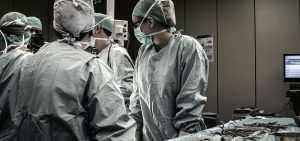Non-surgical treatment services identify, quantify, track, or address issues like illnesses or injuries that don’t call for surgery. They often don’t involve cutting and aren’t too intrusive. A healthcare professional, such as a doctor, general practitioner (GP), diagnostician, or nurse, performs non-surgical operations.
Whether you visit a hospital or an outpatient clinic, knowing what to anticipate during and after a medical procedure can help you prepare. Every medical technique has advantages, dangers, and potential adverse effects. Always seek further details from your doctor before undergoing any advised procedure. When in doubt, get a second opinion from a different physician.
Non-surgical options
Medicines
Your doctor may prescribe medication to lessen or eliminate the harmful effects of an acute (short-term) or chronic (long-term) neurological illness. Some of the most popular prescriptions are listed below:
Anti-epileptic drugs these medications are administered to treat pain that can occasionally result from nerve damage, injury, or degeneration and can help prevent or control seizures. Simple medicines like aspirin and clopidogrel significantly reduce the risk of stroke. More potent blood thinners may be necessary in some cases.
Radio Surgery
Using a Gamma Knife machine, radiosurgery isn’t surgery at all, and radiation is delivered directly to the tumor to reduce or stop a brain tumor from growing. Most brain tumors that receive radiosurgery include Acoustic neuromas, meningiomas, or gliomas are small tumors benign tumors called small pituitary adenomas that develop in the pituitary gland.
Hemangioblastomas are central nervous system tumors that either were not operable, partially operable or recurred after surgery. If the initial tumor is treated, smaller brain cancers may develop.

Rehabilitation
Physical treatment can help your body operate better, and occupational therapy can help you adjust to any physical or cognitive changes brought on by a neurological illness. You can get inpatient and outpatient therapy at Cedars-Sinai to speed up your rehabilitation and help you become more independent. To help you, a group of therapists will work.
Nerve-Stimulation
Noninvasive brain stimulation therapy may be offered when medication is no longer working to treat neurological illnesses, including epilepsy and Parkinson’s. These treatments use electricity or magnetic fields to stimulate or inhibit specific brain areas with minimal complication risk. Electrodes are applied to the scalp to deliver them. Typical possibilities include Rapidly alternating magnetic fields used in repetitive transcranial magnetic stimulation (rTMS) to target specific brain regions while the patient is awake. Like rTMS and electroconvulsive therapy, magnetic seizure therapy (MST) uses magnetic pulses to stimulate a particular target in the brain.
Conclusion
Your doctor may suggest several lifestyle modifications that might aid your return to health and quality of life, such as alterations to diet. People with neurological illnesses may experience fewer symptoms if they consume or refrain from eating specific foods. For instance, the ketogenic diet, which is high in fat and low in carbohydrates, is occasionally prescribed to people with epilepsy. Research suggests it might lessen seizures, particularly in kids who haven’t reacted well to medicines. Altering one’s diet can help prevent dementia and migraines.



